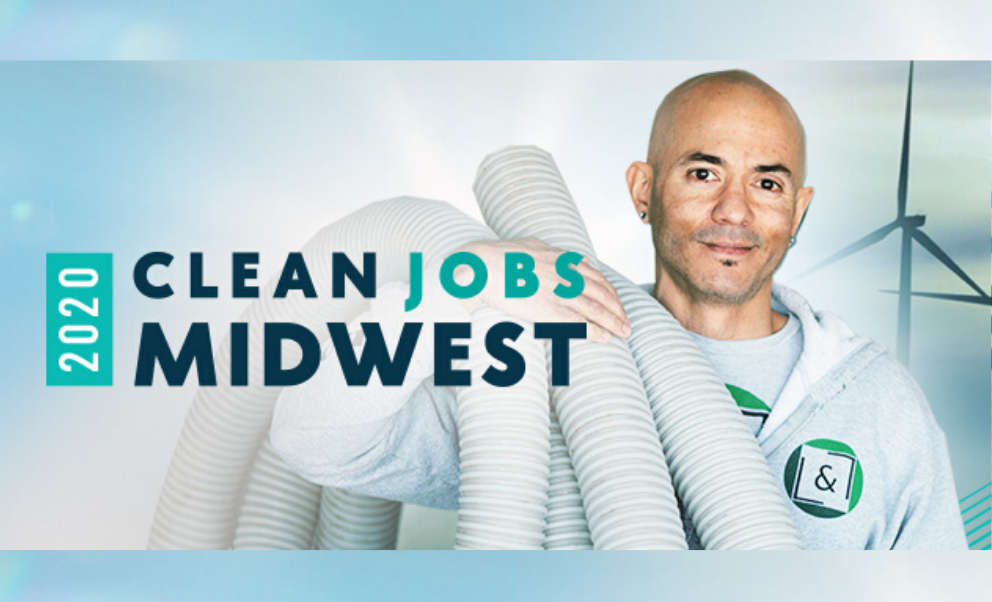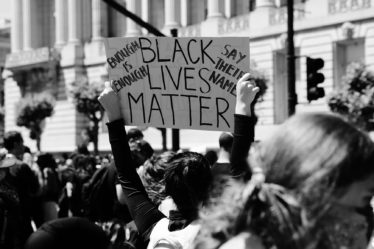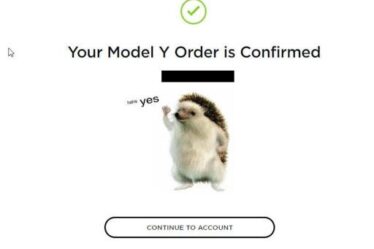
CHICAGO, IL – (June 25, 2020) – As Congress this week considers new stimulus measures for clean energy and other sectors of our economy, a new study shows 744,040 workers were employed in clean energy in the Midwest at the end of 2019. According to Clean Jobs Midwest 2020, clean energy had been one of the region’s biggest and fastest-growing employment sectors, growing nearly 5% since 2017 and almost 4 times faster than total statewide employment. At the end of 2019, more people in the Midwest worked in clean energy than real estate agents and brokers, computer programmers, web developers, and waiters and waitresses– and 50% more than work in fossil fuels.
In 2019, clean energy employment in the Midwest increased for the fifth straight year and accounts for over 2 percent of the entire Midwest workforce, according to Clean Jobs Midwest 2020.
But despite being a bright spot in the regional economy in recent years, the clean energy industry is now shedding jobs at alarming rates because of COVID-19 and the economic downturn, according to a separate analysis of Department of Labor data by E2 and partners.
Since March, 131,660 Midwest clean energy workers have filed for unemployment, including 4,932 new claims filed in May, according to the analysis. In the region, Illinois, Michigan, and Ohio have been hit hardest by the clean energy job losses. Nationwide, more than 620,000 clean energy workers have filed for unemployment. For a full breakdown of clean energy jobs losses in each sector and for every state, see the full analysis here.
Given the size and scope of the clean energy industry, such sustained losses would cast a pall on the Midwest’s – and the nation’s – overall economic recovery. As Clean Jobs Midwest 2020 shows, clean energy provides jobs across hundreds of occupations – including electricians, HVAC technicians, lighting professionals, factory workers, solar and wind installers – and across numerous sectors of the Midwest’s economy, including construction, energy, manufacturing, transportation, finance and agriculture.
According to E2 and Clean Energy Trust, Congress and the Trump administration – along with state leaders – should take quick and substantive action that can get clean energy workers back on the job today and rebuilding our economy back better, cleaner and faster for tomorrow. Support through economic stimulus funding, state policies that advance clean energy, and other measures are particularly important to the region’s small businesses. As Clean Jobs Midwest 2020 shows, over 70% of region’s clean energy workforce were employed by businesses with fewer than 20 employees while more than 158,000 of all jobs were based in rural areas.
Ian Adams, Managing Director at Clean Energy Trust said:
“It has been difficult to witness the job losses in the clean energy industry due to the disruptions caused by the COVID-19 pandemic. The industry was growing faster than the overall economy in the Midwest and was expected to continue to do so. However, while the Midwest has been hit hard by the global health crisis, I am optimistic that the clean energy industry is well-positioned to be an engine of growth to drive the future economic recovery.”
Micaela Preskill, Midwest Advocate of the national, nonpartisan business group E2 said:
“History has shown us that clean energy investments and stimulus have a track record of creating jobs and building our economy. As we look to economic recovery, we urge lawmakers to consider the size, scope and potential for growth of the clean energy industry. Hundreds of thousands of electricians, construction workers, technicians and factory workers work in clean energy in every corner of our region and the industry has grown year after year.”
Maricella Garcia, Solar Installer at Fresh Coast Solar in Chicago, Illinois
“As we recover from the COVID-19 crisis, clean energy investment and job training programs can be part of how we rebuild Illinois and the rest of the country. In 2016, job training programs established by Illinois’s Future Energy Jobs Act created an opportunity for me to join a growing and exciting industry. The solar company where I work now is at the forefront of the Midwest’s energy transformation, helping families and communities realize their energy independence. With each project, we are building a better way to power our communities.”
E’Lois Thomas, Ph.D., Chief Administrative Officer, SEEL LLC
“My company works with utilities throughout the Midwest to implement energy efficient programs. These programs are job creators – from electricians and HVAC installers to tech analysts. It would be irresponsible for our state and federal lawmakers to not include clean energy as they consider economic stimulus. Energy efficiency has the potential to continue creating jobs while saving consumers money.”
Losses Eliminate Growth Across Key Sectors
| MIDWEST CLEAN ENERGY ECONOMY | ||
| Sector | Q4 2019 Employment | Unemployment Claims Since March |
| Energy Efficiency | 534,567 | 91,992 |
| Renewables | 87,307 | 16,547 |
| Advanced Transportation | 87,993 | 15,026 |
| Grid & Storage | 26,251 | 4,536 |
| Clean Fuels | 7,923 | 3,559 |
| TOTAL | 744,040 | 131,660 |
The Midwest’s largest clean energy employer, energy efficiency, has been the hardest hit by the crisis—losing 91,992 jobs or 17% of its total workforce. In 2019, the sector grew to 534,567 jobs.
Nationally energy efficiency has accounted for nearly 70% of all clean energy job losses. In the Midwest, nearly 70% of clean energy unemployment filing were by energy efficiency workers.
The region’s advanced transportation sector was also severely impacted, losing 15,026 jobs in factories that manufacture electric and hybrid vehicles and the parts that go in them. Renewable energy—particularly wind and solar energy workers—lost 16,547 jobs or 19% of the total renewable energy workforce.
Detailed and interactive breakdowns of the region’s clean energy economy are available at CleanJobsMidwest.com – including job totals for every Midwest state, county, congressional district, and state legislative district.
Background:
The Clean Jobs Midwest 2020 report is the fifth iteration of the annual employment analysis. The report expands on data from the 2020 U.S. Energy and Employment Report (USEER) produced by the Energy Futures Initiative (EFI) in partnership with the National Association of State Energy Officials (NASEO), using data collected and analyzed by the BW Research Partnership. The report was released in March 2020 and is available at www.usenergyjobs.org. E2 and Clean Energy Trust are partners on the USEER, the fifth installment of the energy survey first released by the Department of Energy in 2016 and subsequently abandoned under the Trump administration.
Additional Resources:
Previous E2 and Clean Energy Trust Jobs Reports:
Previous E2, E4TheFuture, ACORE Clean Energy Unemployment Reports
###
Environmental Entrepreneurs (E2) is a national, nonpartisan group of business leaders, investors, and professionals from every sector of the economy who advocate for smart policies that are good for the economy and good for the environment. Our members have founded or funded more than 2,500 companies, created more than 600,000 jobs, and manage more than $100 billion in venture and private equity capital. For more information, see www.e2.org or follow us on Twitter at @e2org.
Clean Energy Trust provides catalytic capital and support to early-stage startups in the Mid-Continent region of the United States working on solutions for clean energy, decarbonization, and environmental sustainability. Based in Chicago, Clean Energy Trust invests in and provides hands-on support to help entrepreneurs scale and succeed. To date, Clean Energy Trust has helped its 33 portfolio companies raise $26 of additional investment for every $1 Clean Energy Trust has invested. Learn more at www.CleanEnergyTrust.org and follow us on Twitter at @cleanenergytrst


